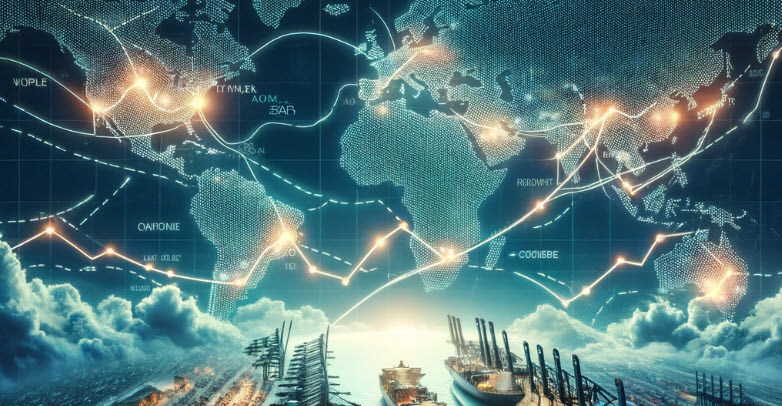The recent skirmishes in the Red Sea, far from being a distant geopolitical concern, have begun to cast long shadows over the European economy, illustrating the intricate web of global supply chains and the delicate balance of international trade.
Disruption in the Red Sea: A Chain Reaction
In an unsettling development, Yemen-based Houthi rebels have launched attacks on cargo ships traversing the Red Sea, a vital artery for freight routes from Asia to Europe. This has forced freight carriers to opt for the longer, more arduous journey around Africa via the Cape of Good Hope, escalating costs and extending delivery times. The ripple effects of these disruptions are now being felt across European supply chains, adding to the inflationary pressures already at play in the region.
The Pulse of Europe’s Economy: A Slowdown in Supply
Recent surveys, including those of purchasing managers from European manufacturing and service sectors, have for the first time in over a year reported increased delivery times. High-profile companies like Tesla and Volvo have already voiced production delays, but the broader impact on European businesses is now coming to light. This lengthening of supply times, reminiscent of the disruptions that contributed to the global inflation spike in mid-2021, raises concerns about a similar, albeit smaller, impact on prices today.
A Closer Look at the Numbers
The data firm S&P Global has quantified this slowdown, with its measure of supply times for eurozone businesses dipping from 53.2 in December to 48.6 in January—a figure below 50 indicates longer waiting times. The situation appears even graver in the U.K., where the measure plummeted to 43.1 from 51.3, underscoring the severity of the supply chain disruptions.
The Broader Economic Landscape
While the U.S. might be less affected due to its lesser dependence on the Suez Canal and alternative trade routes, the situation remains grim for Europe. The cost of global freight has surged, with the Freightos Baltic Index reporting a more than twofold increase in the average cost of transporting goods in a container worldwide between late December and mid-January. This spike in shipping costs is poised to inflate the prices of consumer goods further, potentially impacting the global inflation rate.
A Glimpse into the Future
Though the current disruptions may not mirror the scale of the 2020 and 2021 blockages, their timing—coinciding with the peak shipping season before the Chinese New Year closures—could not have been more critical. As businesses and consumers brace for the fallout, the question remains: how will this chapter in global trade reshape the economic landscape, and what measures can be taken to navigate these turbulent waters?
The Compounding Challenges: Panama Canal and Beyond
Complicating the situation further is the reduced traffic through the Panama Canal due to a severe drought in Central America, forcing more freight traffic to reroute around the Cape of Good Hope. This interaction between the two major chokepoints in global trade not only exacerbates the situation for European businesses but also hints at potential impacts on U.S. trade, particularly for shipments from India to the East Coast.
As we stand at the crossroads of these unfolding challenges, the global community must come together to seek solutions that ensure the resilience of supply chains against geopolitical tensions and natural calamities alike, safeguarding the pulse of the global economy.
Stay up to date on other relevant news in our “News and Politics” section.





